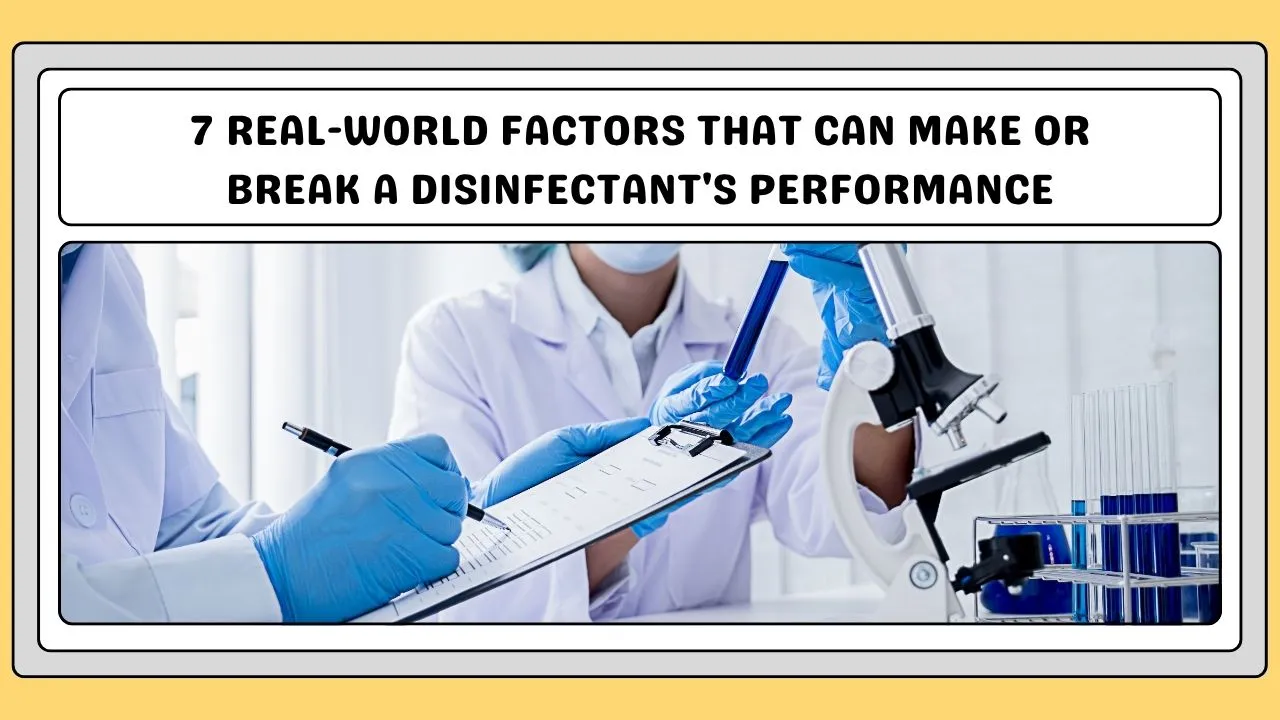Disinfectants are essential in the fight against infections. They help in the reduction or elimination of microorganisms, which pose a threat to health, on equipment, surfaces, and the environment. Notably, disinfectants do not work equally well in all situations. There are numerous conditions that may hinder their pathogen-killing or inactivation potential. Familiarizing ourselves with such conditions assists in correctly selecting and applying disinfectants for maximum results.
Microorganism Focus
Not all microorganisms are easily disinfected. Some prove to be more difficult than others. For instance, the spores of certain bacteria such as Clostridium difficile are very tough and need strong disinfectants. On the other hand, enveloped viruses, such as the flu, are much easier to get rid of. Involving the right microorganism provides information that helps to select the best disinfectant.
Disinfectant Concentration
Disinfectant concentration is directly proportional to the germicidal level of an organism. With most disinfectants, the higher the concentration , the higher the microbial kill rate. Too high concentration may result in surface damage, toxicity or frenetic evaporation. Some products, such as alcohol-based disinfectant, serve best within set limits of concentration, 60%-90%.
Contact Time
Contact time describes the duration a disinfectant spends on the surface in contant of the microbes. If the disinfectant dries too fast, or is removed too quickly, it will be ineffective. Increased contact
time is usually associated with enhanced disinfection. Different pathogens require different and varying time, thus the instructions on the label should be followed
Temperature
Temperature affects the action of disinfectants quite considerably. At extreme temperatures, the rate of reaction increases along with the efficiency of the disinfectants. But, it can degrade some compounds of the disinfectant or make it volatile and thus weak at high temperatures. Colds, on the other hand, can make them inactive.
pH Level
The pH value of the area, or surface to be disinfected does as well. An acidic environment offers with some types of disinfectants while others prefer the alkalis. Take glutaraldehyde which works well in high alkaline pH, phenolics which are better of in low acidic pH. pH level may alter how deep and stable a disinfectant can stay into microbial cells.
Organic Matter
Components such as blood, mucus, food parts and dirt can disturb the disinfectant process. If left unattended, any organic matter will react with the disinfectant and make it less effective to aggress on microbes. This emphasizes the necessity of cleaning surfaces prior to disinfecting them. Cleaning the surface will get rid of organic residues and will make the disinfectant work better.
Surface Type
The characteristics of the surface to be disinfected also has an impact on the results obtained. Smooth non-porous surfaces such as stainless steel and plastic materials are easier to disinfect. Microbes can hide in porous or rough fabrics like porous cloths or woods where the disinfectant cannot reach.
In as much as all disinfectants are effective, certain factors such as the type of microbes concerned, chemical strength, time of contact, conditions of the environment and nature of the surface involved tend to compound or dilute the issue. To achieve adequate disinfection, the above-mentioned factors should be well monitored and the instructions provided on the label should be strictly observed. Apart from providing adequate hygiene, infection control measures during and outside the health settings is an important application of proper disinfectant use.

